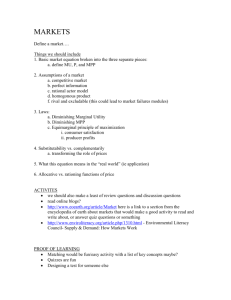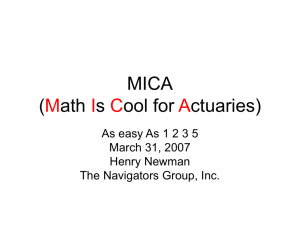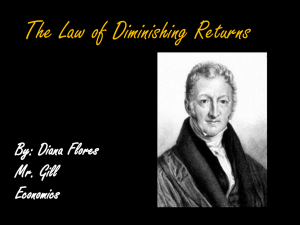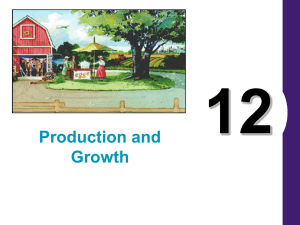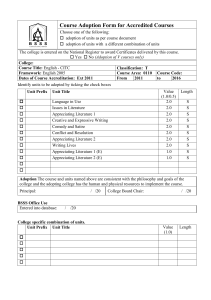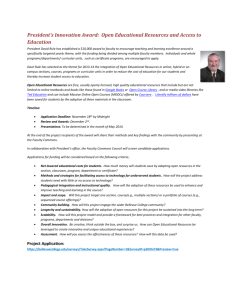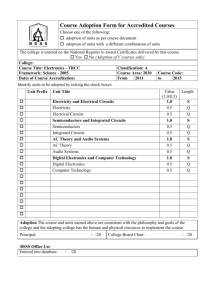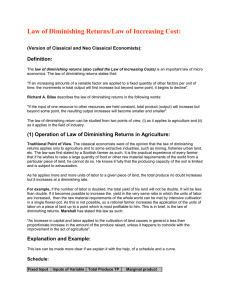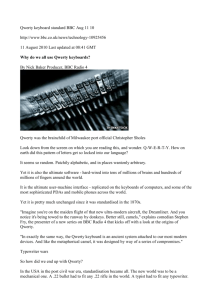Document
advertisement
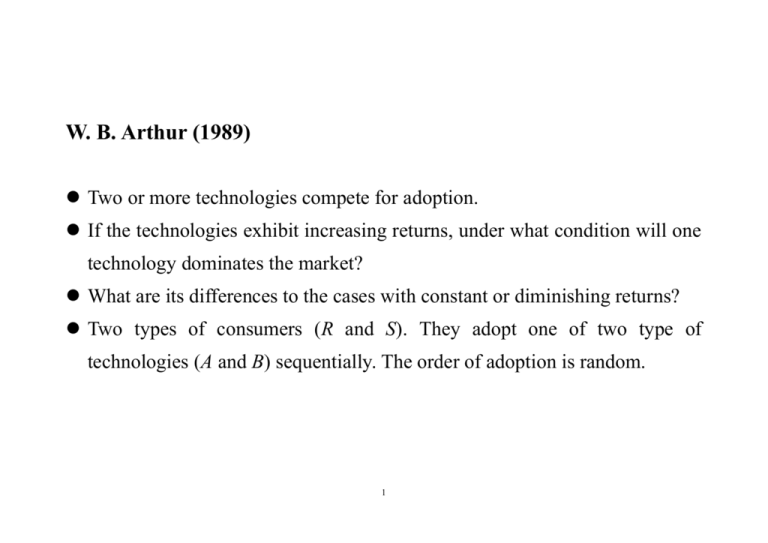
W. B. Arthur (1989) Two or more technologies compete for adoption. If the technologies exhibit increasing returns, under what condition will one technology dominates the market? What are its differences to the cases with constant or diminishing returns? Two types of consumers (R and S). They adopt one of two type of technologies (A and B) sequentially. The order of adoption is random. 1 The utility of R-type consumer adopting technology A (B) is aR rn A bR rnB . That for S-type is aS sn A bS snB . Where n A and nB are the number of consumers already adopting A and B. aR bR and aS bS . R has natural preference for A and S for B. Technology is constant return if r and s = 0; diminishing return if r and s < 0; increasing return if r and s > 0. n n A nB , xn n A / n, d n n A nB . xn 0.5 d n / 2n . 2 The allocation process is (1) predictable if the observer can ex-ante construct a forecasting sequence x so that * n | xn xn* | 0 with probability 1; (2) flexible if a given marginal adjustment g to the technologies returns can alter future choice; (3) ergodic if, given two samples from the observer’s set of possible historical events xn and x'n , | xn x'n | 0 with probability 1; 3 (4) path-efficient if, whenever an agent chooses the more-adopted technology , version of the lagging technology would not nave j delivered more had they been developed. That is, m max j for k j m , where there have been m previous of and k for . 4 Path of d n : (1) constant return: random walk. (2) increasing return: random walk with absorbing boundaries. (3) Diminishing return: random walk with reflecting boundaries. Predictability: (1) constant return: 50-50 split of market share. Predictability guaranteed. (2) diminishing return: same. (3) increasing return: one technology dominates, but don’t know which one. Not predictable. 5 Flexibility: (1) constant return: Adjustments can not change the 50-50 market share outcome. (2) diminishing return: Adjustment changes barriers. Since barriers are reflecting, it continues to affect future outcome. (3) increasing return: Policy adjustment won’t change thing after being in absorbing state. 6 Ergodicity: (1) constant return: Still 50-50 market split after disturbance. (2) diminishing return: Small events change the future path. (3) increasing return: Small events change the future path. Path-efficiency: (1) constant return: Obvious. (2) diminishing return: Even more so. (3) increasing return: Consumers can all adopt an inferior technology. 7 Extension: Story still true if there are K technologies, or more than 2 types of consumers. General Framework Preserve two basic assumptions: Increasing return and chance event. K technologies, pi x is probability technology i is adopted when choice is made, i = 1,…K. x x1,..., xn is market share of technology. Take K = 2 as example. When x1 is higher (lower) than p1 , adoption of 1 tends to decrease. Intuitively, market will settle on a fixed-point. Moreover, the process will settle on “stable” fixed point. 8 Theorem 1: An adoption process is non-ergodic iff p has multiple stable fixed point. Theorem 2: It converges with probability 1 to a single technology iff p only has unit vector stable as fixed points. It is not necessary that technologies with increasing return will result in a dominant technology. It is still not well-known to what degree economy is locked-in to inferior technology. Chance matters Superior technology might not survive. 9 David (1985): A case study of increasing return. QWERTY typewriter dominates. C. Sholes (1860’s) Densmore Remington adoption near universal dominance in 1905. QWERTY is not a superior technology. (Dvorak and Apple adoption, DHIATENSOR) Features of QWERTY: (1) technical interdependence. (2) economy of scale. (3) quasi-irreversability. Chance events matter. 10
